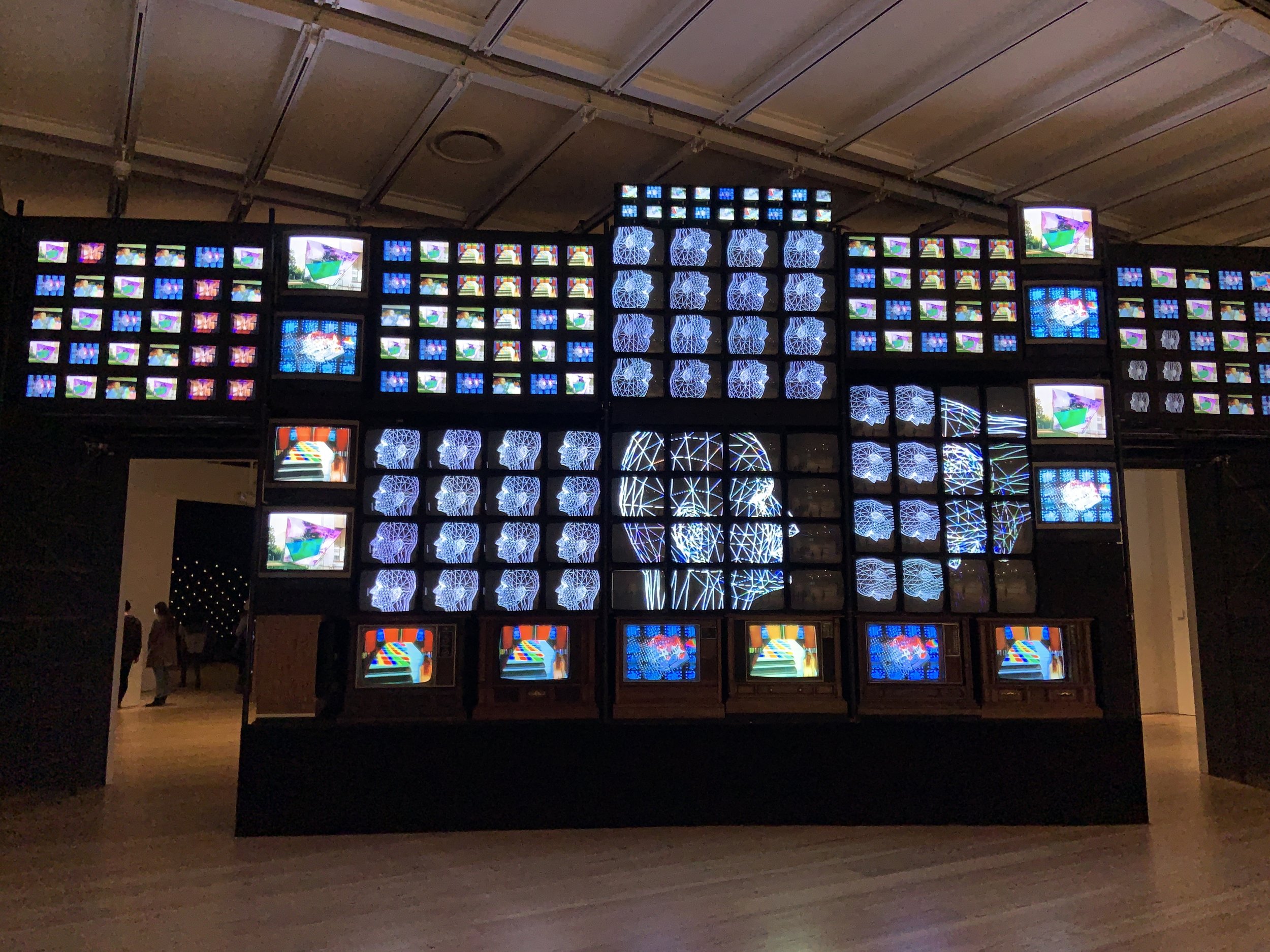Programmed: Rules, Codes, and Choreographies in Art, 1965–2018, is a visual feast for someone like me who is obsessed with video and computational art. Nam June Paik’s "Fin de Siècle II", the huge centerpiece multichannel video installation, was one of my favorite. This massive 7 channel structure is 17 feet high, 40 feet wide, built with 207 cathode-ray tube televisions from the 80s. The second time the work has been displayed at the same museum since 1989, the Whitney is looking to resurrect the piece by bringing it back as close as possible to the sate it was, but different issues arose. Without Paiks’s presence, the reconstruction process was not an easy one. The old wiring diagrams did not match what was actually being displayed because Paik added some improvisational touch while setting it up back in the days. There were also aging problems where the museum had to acquire huge quantities of old TVs from the 80s. They were almost going to use flat screens but the piece would lose its appeal as Paik took what was available for him back then. After all, the Whitney managed to bring the original piece back to the public after two decades.
I’m very fascinated by the scale and complexity of this piece. Outside a bank of computers and processors that control what image goes on each screen is the entire wall from floor to ceiling filled with dazzling and saturated fast-changing electronic images, as well as multiple soundtracks being imposed onto the viewers, adding extra layer to the already distracting multi-sensory experience. I could somehow relate this overwhelming experience with Time Square, a place I always try to stay away from with too many bright flashing images and noise from all kinds of broadcasted sounds of ads. I get anxious and lose my orientation when exposed to environment for too long. Paik’s use of multichannel video was just right as he succeed in predicting and simulating this “spectacle” influenced by screen based media as TV became widely available at his time.
Paik said he wanted “to shape the TV screen canvas as precisely as Leonardo, as freely as Picasso, as colorfully as Renoir, as profoundly as Mondrian, as violently as Pollock and as lyrically as Jasper Johns.” After Paik came the age of video art, video is transformed into medium of art rather than the traditional moving images with a start and end and a narrative. Having a couple of experiences of live video performances myself, I’m truly captivated by video’s boundless possibilities to elaborate live performances in a multi-media context.
Nam June Paik - Fin de Siècle II
A few other works at the exhibition, in my opinion, resonates with Martha Buskirk’s “Original Copies”, where she stated, “recent trends allow the artist’s act of making to be replaced by a process of designation, such that selecting and categorizing can become the act of authorship itself.” The designation of authorship therefore becomes a comment of the previous work and simultaneously a new category of works where the artist changes the same subject’s significance in the course of art history. I was excited to see the works of one of my favorite conceptual artists Sol LeWitt and computer artist Casey Reas placed side by side. Casey’s software modification of Sol Lewitt’s “Wall Drawing #358” is a different approach to execute the same instructions done by human. And John F. Simon Jr.’s Color Panel v1.0 is placed next to Josef Albers’ Ten Variants and Homage to the Square, where john cited his influence from, allowing him to keep addressing the same principles of color theory and perception through dynamic painting using software. “Thus the old apprenticeship in skill and technique turns into a new apprenticeship in ideas,” according to Buskirk.
Sol LeWitt - 4th wall from Wall Drawing #289
Josef Albers - Ten Variants(left)
Homage to the Square(right)
Casey Reas - Sol LeWitt Wall Drawing #358
John F. Simon Jr. - Color Panel v1.0





